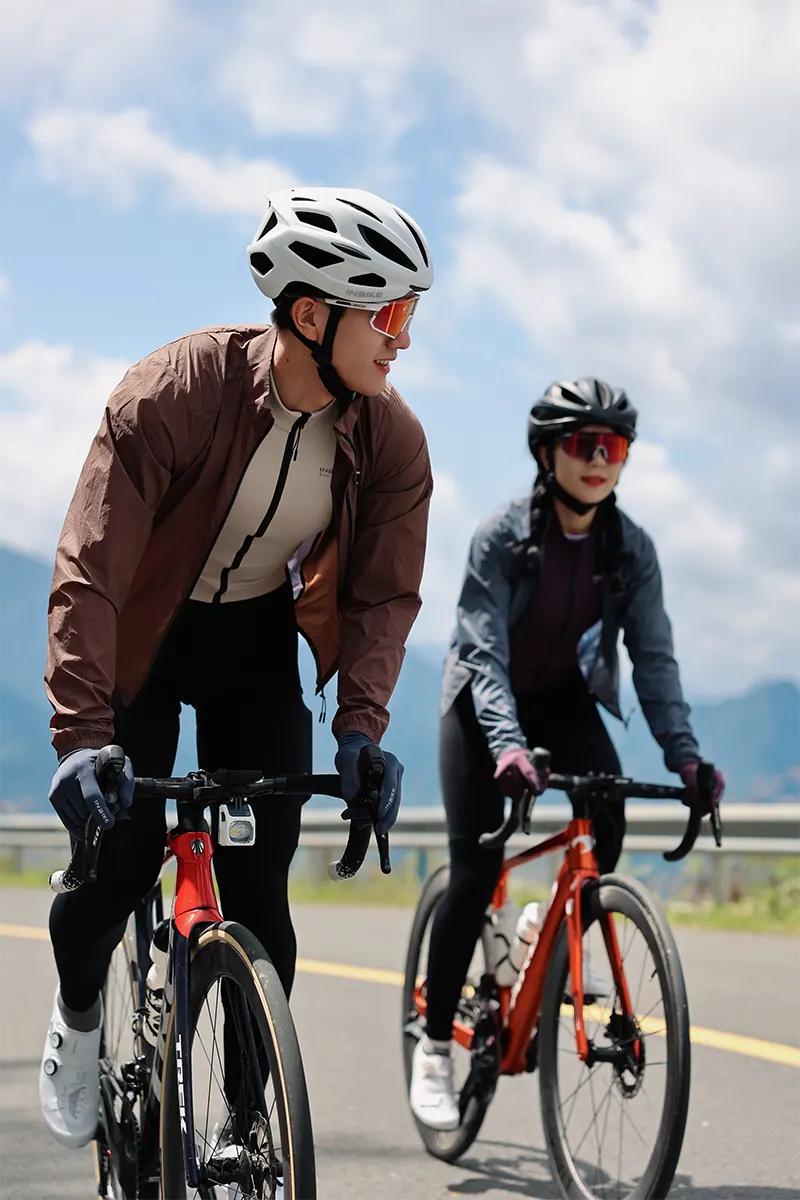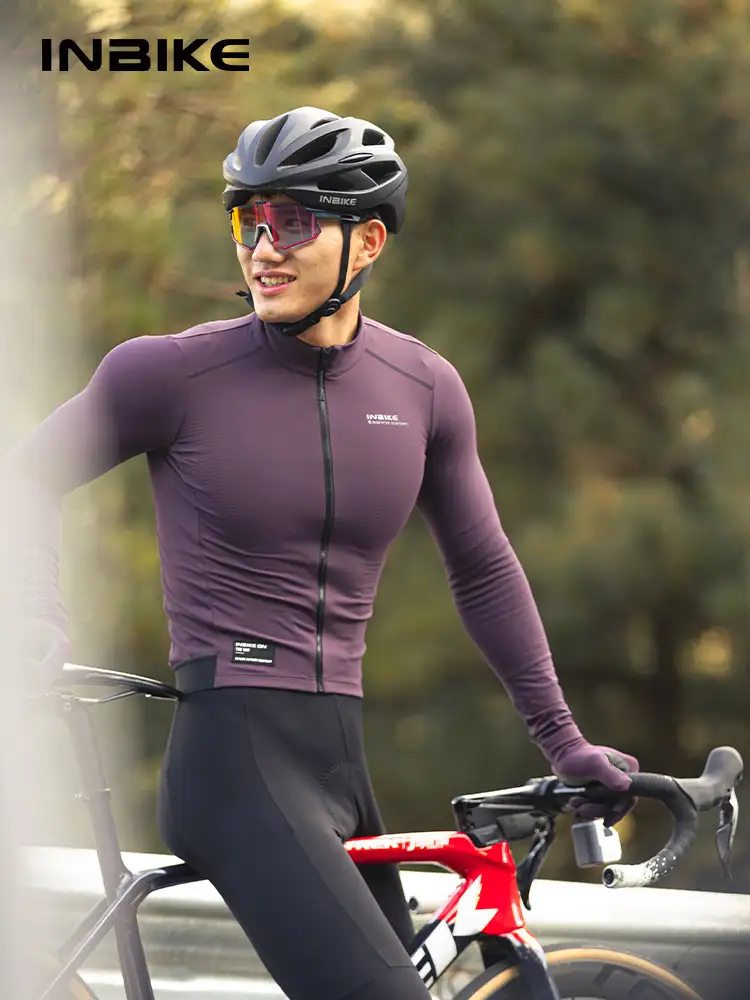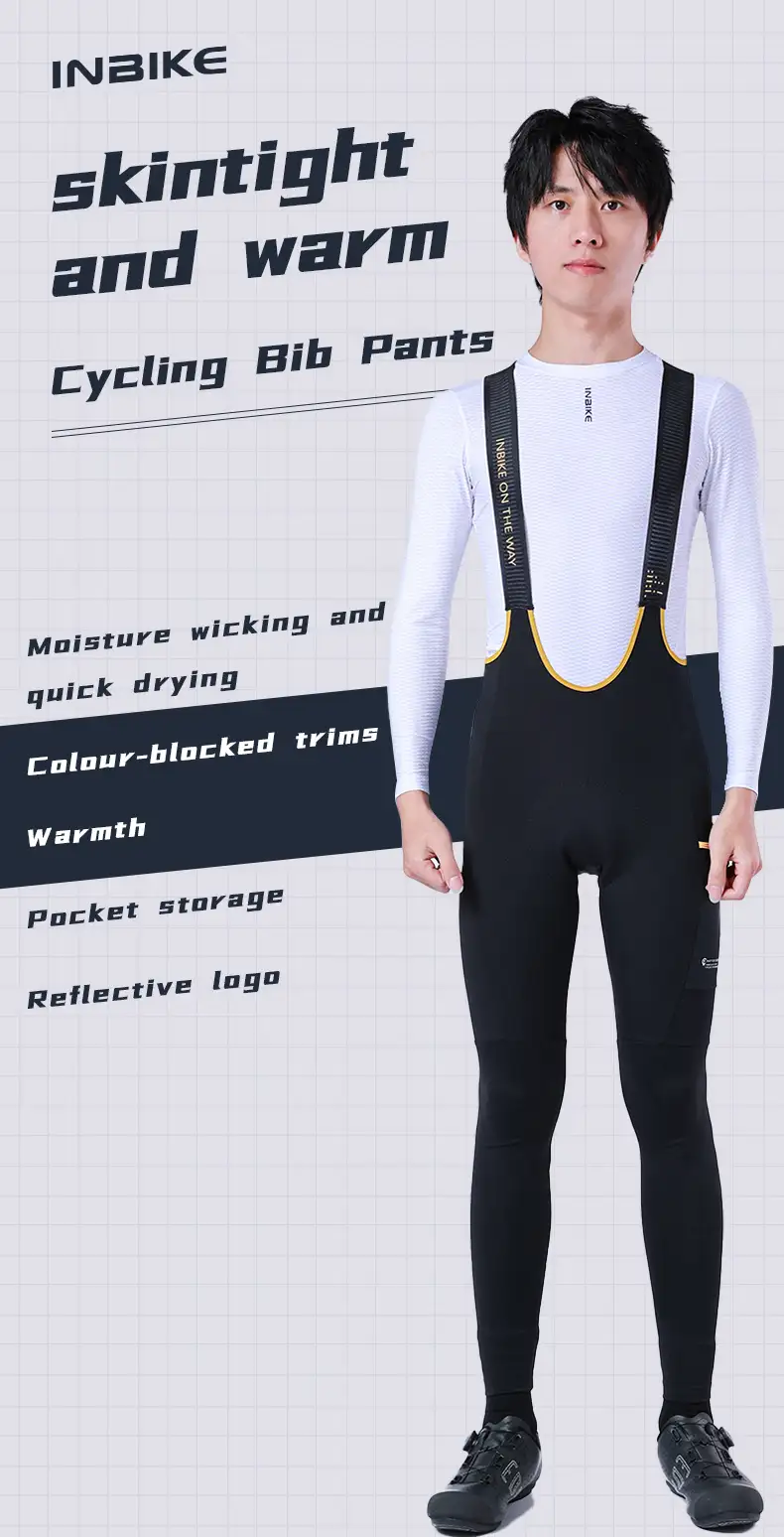The Onion Principle for Winter Cycling
Cycling enthusiasts who enjoy riding bikes may find it difficult to give up cycling in winter because it allows them to appreciate the beauty of nature and the joy of cycling in different seasons. However, one inevitable problem with winter cycling is low temperature. Therefore, onion layering has emerged and is accepted by many cycling enthusiasts. Today, we will introduce the basic concept of onion principle and share some popular winter cycling outfits.
The Origin of Onion Principle
The primary concern for cold weather cycling is sweat wicking. During cycling, the body naturally generates heat, so riders do not usually feel cold, and it results in a lot of sweating. Therefore, clothes must have sweat-wicking functionality. To cope with sweating and the cold during cycling and rest, an onion-style dressing method is needed, where clothes are composed of three layers: an inner layer of quick-drying sweat-wicking fabric, a middle layer for warmth, and an outer layer for windproof. This means wearing sports underwear, long-sleeved cycling jerseys, and windbreakers to regulate body temperature.
In addition, autumn and winter cycling attire should be as bright as possible, just like in other seasons, to make it easier for other vehicles on the road to notice and ensure safety. Or choosing cycling apparel with reflective design is also a great way.

The Significance of Onion Layering
Layering for warmth: The onion layering method emphasizes the use of layering to keep warm in cold weather. Each layer, from the inside out, provides warmth, and layering can enhance overall warmth.
Breathable and sweat-wicking: There is a certain gap between each layer, which allows sweat to evaporate and prevents moisture accumulation. Different fabrics also help with sweat-wicking. This ensures warmth without dampness.
Adjustable: Layering allows for adjustment based on weather conditions. The outer layer can be thickened or thinned, and the inner layer can also be adjusted. Add layers when it’s cold and remove layers when it’s hot. This can help regulate body temperature to the optimal state.
Key protection: For example, a warm base layer protects the core, and a scarf protects the head and neck. Concentrate on keeping the most vulnerable areas warm.
Comfort: Each layer of clothing should not be too thick or heavy, ensuring flexibility and comfort without restricting movement.
Therefore, onion layering considers both warmth and breathability/sweat-wicking while also ensuring comfort. It is very suitable for outdoor activities in cold weather when freedom of movement is required.
Now that we’ve covered onion layering, let’s provide some winter cycling outfit suggestions based on our own experience as cyclists and recommendations from other cycling enthusiasts.
Upper Body Warmth
Sports base layer: Just like adding a warm base layer under regular clothing in cold weather, you can also wear a base layer under your cycling jersey. If the temperature is below around 10°C and you don’t sweat much, you can wear a regular cotton base layer. However, if the temperature is slightly higher or you sweat a lot, cotton base layers can become uncomfortable when wet with sweat and feel even colder when exposed to the wind, so they may not be suitable.
Professional sports base layers designed for moisture-wicking and close-fitting have the advantage of being snug and allowing airflow. They help wick sweat away from the skin’s surface. For extremely cold weather, you can choose a sports base layer with added insulation. It won’t have the cold touch of regular moisture-wicking shirts or long-sleeve cycling jerseys, providing more comfort and warmth. Professional cycling base layers often have breathable designs and antimicrobial-treated fabrics to prevent odor.
Long-sleeve cycling jersey: You can layer a long-sleeve cycling jersey over the base layer and zip it up high to prevent wind from entering through the collar. However, it’s important to note that not all long-sleeve cycling jerseys provide warmth because many are designed for moisture-wicking and can be worn in summer as well. Therefore, when cycling in winter, it’s recommended to choose fleece long-sleeve cycling jerseys specifically designed for winter riding. These jerseys often feature windproof fleece fabric on the front and breathable moisture-wicking fabric on the back for both wind protection and moisture management.
INBIKE recently launched a new multifunctional fleece-lined long-sleeve cycling jersey with multiple pockets for convenient storage during rides. It combines high-quality fleece fabric for warmth and lightweight mesh fabric on the back for breathability.

Windproof outer jacket: The most important aspect is wind resistance. If wind can penetrate your clothing, even if you wear thick outer layers, you will still feel cold. Regular cotton jackets or down jackets are not suitable as they may either let in too much wind or be too heavy. It’s best to choose a dedicated cycling winproof thermal jacket that not only meets the requirements of cycling in terms of fit but also provides windproof and waterproof features to handle light rain or snow.
Breathable and comfortable windproof vests focus on core warmth and prevent cold air from entering the body. They fully utilize the onion layering effect in dealing with changing weather conditions. Especially packable and easy-to-store windproof vests are a preferred choice for winter cycling.
Full-finger cycling gloves: During regular cycling, you may not feel cold in your fingers, so most people wear half-finger gloves. However, if you encounter extremely low temperatures, strong winds, rain, or downhill sections where you’re not pedaling much and your fingers are exposed to the wind, they may become numb, affecting your ability to brake and raising safety concerns during your ride.
Therefore, in extreme cold weather or if you anticipate riding on mountainous routes or downhill sections, it’s best to choose full-finger windproof fleece gloves for better protection against the cold. If you expect bad weather conditions, it’s also recommended to select gloves with water-resistant functionality to prevent water from seeping in.
Lower Body Warmth
Cycling pants: While the lower body is usually less susceptible to the cold than the upper body, in winter cycling, cold air blowing directly on the knees can be harmful. It’s recommended to wear long cycling pants that cover the knees. However, most cycling pants are made of moisture-wicking and breathable materials, so they don’t provide much warmth. For extremely cold weather, you can choose cycling pants made of fleece materials for better insulation.
INBIKE new fleece-lined cycling pants are an excellent choice for winter cycling. The main fabric used are winter fleece fabric with good elasticity and a three-layer composite windproof fabric for splicing. And the back features a breathable jacquard mesh fabric that is moisture-wicking and quick-drying, providing excellent physical heat dissipation. The pants also feature a waistband with a windproof function to enhance warmth and protect against cold winds in winter cycling.

Headband: The headband is truly a “magic headband” with many uses. It’s a great sunscreen item in summer and a warm treasure in winter. Due to the ventilation design of helmets, the top of the head can feel particularly cold in winter.
However, wearing a headband can immediately block the cold wind. The mouth, nose, and neck are also important areas to keep warm. With just one headband, you can cover your mouth, nose, and neck at the same time. If it’s too cold, you can use two headbands at once to provide full protection for your head. However, most headbands are made of breathable and moisture-wicking materials. For better insulation, you can choose double-layered headbands or fleece materials.
Onion layering may work, but please stop riding is the weather is bad. Safety is always the premium.

